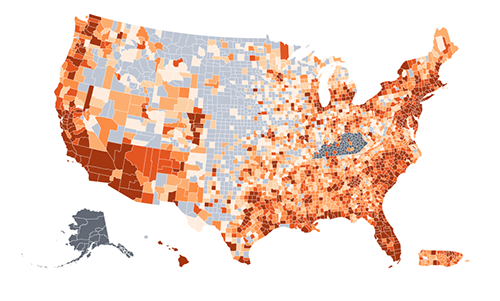CDC reports show 8% decline in new HIV infections from 2015 to 2019
A series of reports released by the Centers for Disease Control and Prevention (CDC), May 27, show “hopeful signs of progress” but point to some areas in which progress continues to lag. The reports, which use CDC surveillance data, all cover the five-year period 2015 to 2019.

Key findings:
- After a period of general stability, new HIV infections declined by 8% from 2015 to 2019;
- While the number of HIV infections among men who have sex with men (MSM) decreased 9% overall and infections among young MSM aged 13-24 declined 33% overall, young Black/African American and Hispanic/Latino MSM continue to be “severely and disproportionately affected.”
- The South continues to be disproportionately affected, accounting for more than half of new HIV infections in 2019;
- The number of HIV infections among persons who inject drugs (PWID) remained stable overall, with notable increases occurring among white PWID, likely due to concentrated HIV outbreaks among this group associated with the opioid crisis;
- At the end of 2019, an estimated 1.2 million persons aged 13 and older were living with HIV infection, including about 13% whose infection had not been diagnosed;
- In 2019, nearly 285,000 people, or 23% of people eligible for PrEP, were prescribed it, compared to just 3% in 2015.
The new reports also showed that HIV diagnoses increased among transgender males and females, white transgender persons, and transgender persons aged 25-44. Increases were also seen among American Indian/Alaska Native persons and MSM aged 30-34 and 55-64.
“Overall, these reports suggest improvements in linkage to care, viral suppression, and increased PrEP use are likely contributing to recent progress,” said Dr. Demetre Daskalakis, director of the CDC’s Division of HIV/AIDS Prevention. “However, the reports also signal an urgent need to expand and improve HIV prevention, care, and treatment for groups who could most benefit. Intensified efforts are particularly needed in the South and among disproportionately affected populations like transgender persons, Black/African American and Hispanic/Latino MSM, and gay and bisexual men, overall.”
The new reports can be accessed here:
Estimated HIV Incidence and Prevalence in the United States, 2015–2019
Monitoring Selected National HIV Prevention and Care Objectives by Using HIV Surveillance Data—United States and 6 Dependent Areas, 2019
Diagnoses of HIV Infection in the United States and Dependent Areas, 2019